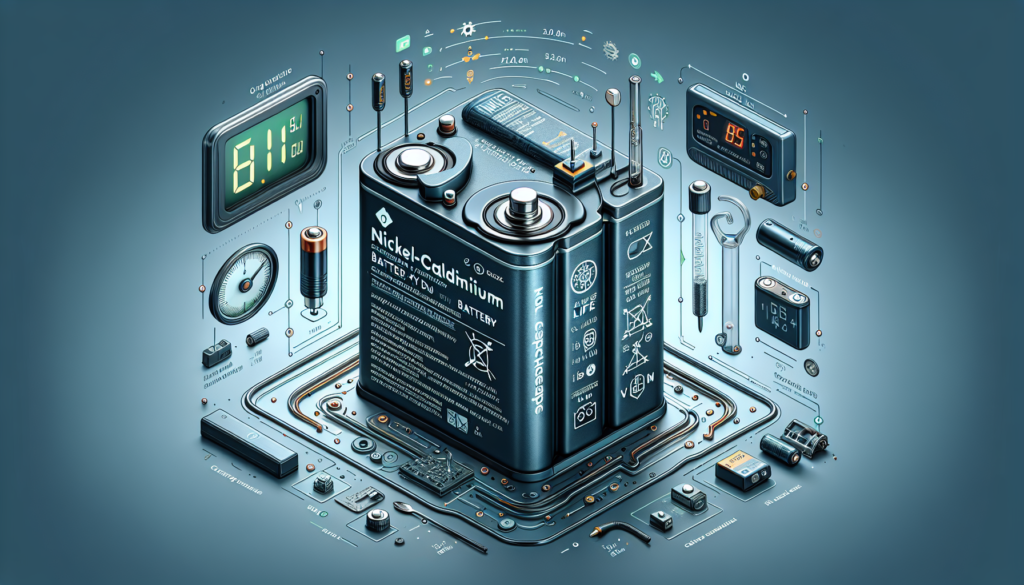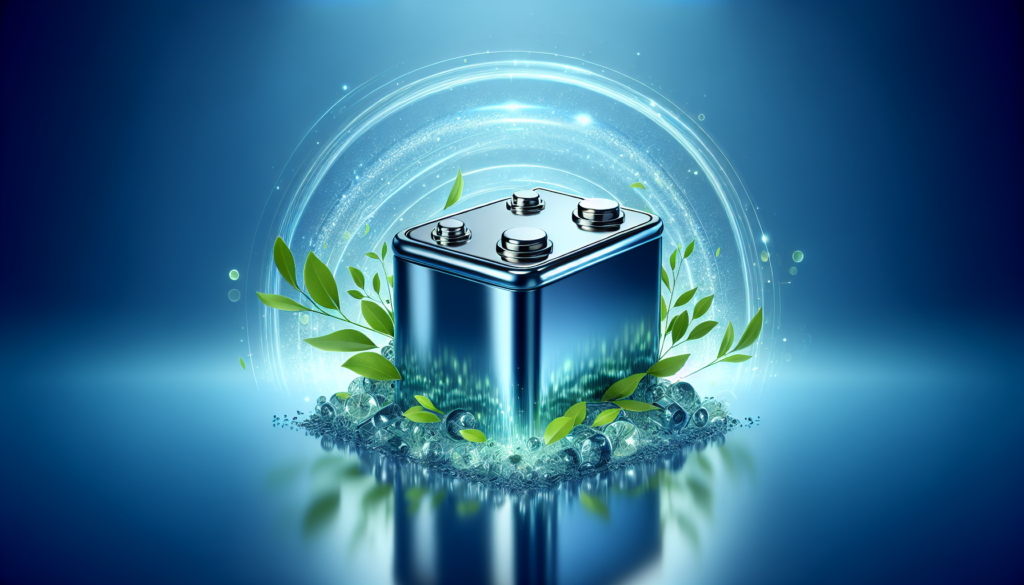If you’re looking for long-lasting power for your electronic devices, then alkaline batteries are the answer. With their superior performance and reliable energy output, alkaline batteries have become a popular choice among consumers. From remote controls to flashlights, these batteries are designed to provide a steady and consistent flow of power, ensuring your devices stay operational for longer periods of time. In this article, we will explore the many benefits and features of alkaline batteries, as well as delve into some tips on how to maximize their lifespan. So, next time you’re in need of batteries, remember the name – alkaline batteries.
Overview of Alkaline Batteries
Definition of alkaline batteries
Alkaline batteries are a type of disposable battery that are commonly used in various electronic devices and household items. They are called “alkaline” because the electrolyte used in these batteries is typically a potassium hydroxide solution, which is an alkaline substance.
Chemistry behind alkaline batteries
The chemistry behind alkaline batteries involves a process known as a redox reaction. The positive electrode, or cathode, of the battery is typically made of manganese dioxide (MnO2), while the negative electrode, or anode, is made of zinc. The potassium hydroxide electrolyte enables the flow of ions between the anode and cathode, allowing the battery to generate electricity.
Advantages of alkaline batteries
Alkaline batteries have several advantages that make them a popular choice for many applications. They have a long shelf life, which means they can be stored for extended periods without losing their charge. Alkaline batteries also have a higher energy density compared to other types of batteries, allowing them to provide more power for longer durations. Additionally, they have a relatively low self-discharge rate, meaning they can hold their charge even when not in use.
Disadvantages of alkaline batteries
Despite their many advantages, alkaline batteries do have a few drawbacks. One of the main disadvantages is that they cannot be recharged. Once an alkaline battery has been fully drained, it needs to be replaced with a new one. Additionally, they have a relatively high internal resistance, which can result in a voltage drop when the battery is under high load. Alkaline batteries also contain various chemicals that can be harmful to the environment if not disposed of properly.
Components of Alkaline Batteries
Primary components of alkaline batteries
The primary components of alkaline batteries include the cathode, anode, and electrolyte. These components work together to generate and store electrical energy. The cathode, typically made of manganese dioxide, acts as the positive electrode, while the anode, made of zinc, serves as the negative electrode. The electrolyte, which is a potassium hydroxide solution, provides the necessary ions for the redox reactions to occur.
Positive electrode materials
The positive electrode, or cathode, of alkaline batteries is typically made of manganese dioxide (MnO2). This material is chosen for its ability to efficiently store and release electrical energy during the battery’s operation. Additionally, manganese dioxide is chemically stable and relatively abundant, making it an ideal choice for alkaline batteries.
Negative electrode materials
The negative electrode, or anode, of alkaline batteries is typically made of zinc. Zinc is chosen for its ability to efficiently react with the electrolyte and release electrons to generate the battery’s electrical current. Zinc is also readily available and cost-effective, making it a practical choice for alkaline batteries.
Electrolyte materials
The electrolyte used in alkaline batteries is typically a solution of potassium hydroxide (KOH). This alkaline solution facilitates the movement of ions between the cathode and anode, allowing the battery to convert chemical energy into electrical energy. Potassium hydroxide is used as the electrolyte in alkaline batteries due to its high ionic conductivity and chemical stability.
Other components
In addition to the primary components, alkaline batteries also contain other components such as separators and collectors. Separators are thin, porous materials that are placed between the cathode and anode to prevent direct contact and short circuits. Collectors, usually made of metal, help to collect and transfer the electrical current generated by the battery.
Working Principle of Alkaline Batteries
Electricity generation in alkaline batteries
The working principle of alkaline batteries involves the conversion of chemical energy into electrical energy through a redox reaction. When the battery is connected to a circuit, the zinc anode undergoes an oxidation reaction, releasing electrons and producing zinc ions (Zn2+). These electrons flow through the circuit, creating an electrical current. Simultaneously, at the cathode, the manganese dioxide undergoes a reduction reaction, consuming the electrons and reacting with the zinc ions and the hydroxide ions from the electrolyte to form zinc hydroxide (Zn(OH)2) and water (H2O).
Redox reactions in alkaline batteries
The redox reactions that occur in alkaline batteries involve the transfer of electrons between the anode and cathode. At the anode, zinc atoms lose two electrons, becoming positively charged zinc ions (Zn2+). These zinc ions dissolve into the electrolyte, while the released electrons flow through the circuit. At the cathode, manganese dioxide and hydroxide ions from the electrolyte combine with the electrons to form water and zinc hydroxide. This overall chemical reaction allows the battery to convert the stored chemical energy into electrical energy.

Types of Alkaline Batteries
Standard Alkaline Batteries
Standard alkaline batteries are the most common type of alkaline batteries found in households and businesses. They are available in various sizes, including AAA, AA, C, D, and 9V, to accommodate different devices and applications. Standard alkaline batteries are suitable for low to moderate power-consuming devices and offer a good balance between cost and performance.
Heavy-Duty Alkaline Batteries
Heavy-duty alkaline batteries, also known as high-capacity alkaline batteries, are designed to provide a longer runtime and deliver more power than standard alkaline batteries. These batteries are ideal for high-drain devices such as digital cameras, portable gaming consoles, and remote-controlled toys. Heavy-duty alkaline batteries offer improved performance and a higher energy density, but they tend to be more expensive than standard alkaline batteries.
Rechargeable Alkaline Batteries
Unlike disposable alkaline batteries, rechargeable alkaline batteries can be recharged and reused multiple times, making them a more cost-effective and environmentally friendly option. Rechargeable alkaline batteries use a slightly different chemistry that allows for the reversible flow of electricity. They are available in various sizes and can be used in devices ranging from portable electronics to power tools. However, rechargeable alkaline batteries typically have a lower capacity and voltage compared to disposable alkaline batteries.
Specialty Alkaline Batteries
Specialty alkaline batteries are designed for specific applications that require unique performance characteristics. These batteries are tailored to meet the demands of specialized devices, such as medical equipment, photography equipment, and aviation instruments. Specialty alkaline batteries may have a different shape or size and are often optimized for high performance, reliability, and safety.
Applications of Alkaline Batteries
Household devices
Alkaline batteries are widely used in various household devices, including remote controls, flashlights, wall clocks, smoke detectors, and portable radios. These batteries provide a reliable and convenient power source for everyday household items, ensuring their proper functionality.
Electronics and gadgets
Many portable electronic devices rely on alkaline batteries for power. Devices such as digital cameras, portable audio players, electronic toys, and handheld gaming consoles often utilize alkaline batteries due to their high energy density and long shelf life. Alkaline batteries offer a convenient and easily replaceable power source for these gadgets.
Medical devices
Alkaline batteries play a crucial role in powering a wide range of medical devices. From blood glucose meters and hearing aids to portable nebulizers and thermometers, alkaline batteries provide a reliable power source that is essential for the proper functioning of medical equipment. The long shelf life and high energy density of alkaline batteries make them well-suited for medical applications.
Industrial applications
Alkaline batteries are also used in various industrial applications. They are commonly employed in remote monitoring systems, emergency lighting, electric gates, and other industrial equipment that requires a reliable and long-lasting power source. Alkaline batteries offer a cost-effective solution for powering these devices in remote or off-grid locations.
Alkaline Batteries vs Other Battery Types
Comparison with Zinc-Carbon Batteries
Alkaline batteries offer several advantages over zinc-carbon batteries, which are another common type of disposable battery. Alkaline batteries typically have a higher energy density, longer shelf life, and better performance under high-drain conditions compared to zinc-carbon batteries. Additionally, alkaline batteries are often more cost-effective in the long run due to their longer runtime and lower self-discharge rate.
Comparison with Lithium Batteries
Lithium batteries, particularly lithium-ion batteries, have become increasingly popular due to their high energy density and rechargeability. Compared to alkaline batteries, lithium batteries offer even higher energy density, longer life cycles, and the ability to be recharged multiple times. However, lithium batteries are generally more expensive and may require special handling and disposal procedures due to their higher voltage and flammable nature.
Comparison with Nickel-Metal Hydride (NiMH) Batteries
NiMH batteries are another rechargeable battery option that is often compared to alkaline batteries. NiMH batteries have a higher capacity and can be recharged more times compared to alkaline batteries. However, NiMH batteries have a higher self-discharge rate, meaning they can lose their charge faster when not in use. When it comes to cost-effectiveness, alkaline batteries may be a more affordable choice for devices that are not frequently used.
Tips for Extending Alkaline Battery Life
Proper storage and handling
To extend the life of alkaline batteries, it is important to store them in a cool and dry environment. Avoid exposing batteries to extreme temperatures or humidity, as this can affect their performance. It is also recommended to keep batteries in their original packaging until they are ready to be used. Properly handling and inserting the batteries into devices can also prevent damage and improve their lifespan.
Reducing unnecessary drain
To maximize the lifespan of alkaline batteries, it is essential to minimize unnecessary drain. This can be done by removing batteries from devices when not in use for an extended period. In devices with multiple batteries, ensure that all the batteries are of the same age and capacity to prevent uneven drain and premature failure. Turning off devices when they are not needed can also help conserve battery life.
Matching battery capacity to device requirements
Using the appropriate battery capacity for a device is crucial for extending alkaline battery life. Devices that require high power or have a high-drain nature should be paired with batteries of a suitable capacity to ensure optimal performance and longevity. Using lower-capacity batteries in high-drain devices can result in reduced runtime and frequent battery replacement.
Environmental Impact and Recycling of Alkaline Batteries
Environmental concerns
Alkaline batteries contain various chemicals, including heavy metals such as zinc and manganese dioxide, which can be harmful to the environment if not disposed of properly. When alkaline batteries are thrown away in regular trash and end up in landfills, these chemicals can leach into the soil and water, potentially contaminating the ecosystem. It is important to be aware of the environmental impact of alkaline batteries and take steps to minimize their negative effects.
Proper disposal and recycling options
To minimize the environmental impact of alkaline batteries, it is recommended to dispose of them at designated recycling centers or drop-off points. Many communities offer recycling programs specifically for batteries, including alkaline batteries. Recycling facilities can safely handle the disposal and recovery of valuable materials from alkaline batteries, such as zinc and manganese. Proper recycling helps reduce waste and allows for the reuse of valuable resources.
Common FAQs about Alkaline Batteries
How long do alkaline batteries last?
The lifespan of alkaline batteries varies depending on factors such as usage, device type, and battery quality. Generally, alkaline batteries can last from several months to a few years, depending on the frequency and intensity of use. High-drain devices will use up alkaline batteries more quickly than low-drain devices.
Can alkaline batteries be recharged?
No, alkaline batteries are not designed to be recharged. Attempting to recharge alkaline batteries can be dangerous and may result in leakage or rupture. It is important to use rechargeable batteries specifically designed for recharging if the need for reusability is desired.
What are the signs of a dying alkaline battery?
Common signs of a dying alkaline battery include reduced runtime, decreased power output, and difficulties in maintaining a consistent voltage. Devices may experience intermittent power loss or fail to operate altogether when the battery is nearing the end of its life.
Can I mix different brands of alkaline batteries?
While it is generally recommended to avoid mixing different brands of alkaline batteries, it can be done in some cases. However, it is important to ensure that the batteries have similar capacities, chemistry, and voltage outputs to prevent uneven discharge and potential damage to devices.
Can alkaline batteries leak?
Yes, alkaline batteries can leak if they are exposed to extreme temperature changes, damaged or expired. Leaking alkaline batteries can release corrosive chemicals, which can damage devices and pose a risk to health. It is important to handle and store alkaline batteries properly to minimize the risk of leakage.
Can alkaline batteries explode?
While it is rare, alkaline batteries have the potential to explode or rupture if they are subjected to extreme conditions, such as physical abuse, high temperatures, or short circuits. It is crucial to handle and dispose of alkaline batteries with care to minimize the risk of accidents.
Conclusion
Alkaline batteries are a versatile and reliable power source used in various applications, ranging from household devices to industrial equipment. Their chemistry and design allow for the efficient release and storage of electrical energy. Alkaline batteries offer several advantages, such as a long shelf life, high energy density, and availability in different sizes. However, they also have some limitations, such as being non-rechargeable and potentially harmful to the environment if not disposed of properly. By understanding the working principle and different types of alkaline batteries, as well as implementing proper handling and recycling practices, users can make the most of this popular battery technology while minimizing its environmental impact.

